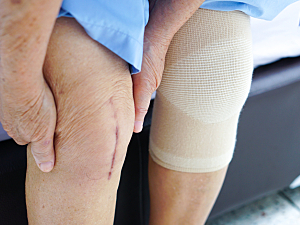The method of anesthesia administration during total joint arthroplasty (TJA) is an increasing area of scrutiny given the trend toward outpatient surgery with same-day discharge. Bupivacaine has been the standard agent because of its reliability and low side effect profile, but its duration of action predisposes patients to increased risk of acute complications.
Antonia F. Chen, MD, MBA, director of research in Arthroplasty Services in the Department of Orthopaedic Surgery at Brigham and Women’s Faulkner Hospital, Ahmed Siddiqi, DO, MBA, of the Orthopedic Institute of Central Jersey, and colleagues performed a systematic review and meta-analysis comparing bupivacaine with a shorter-acting spinal anesthetic, mepivacaine, during elective TJA. In The Journal of Arthroplasty, they note an earlier return to motor function with mepivacaine along with a shorter length of stay and decreased risk of urinary retention, with no differences in pain or mobility.
Methods
The authors searched PubMed, Ovid MEDLINE, and Ovid Embase for English-language prospective studies, retrospective studies, case–control studies, and randomized controlled trials that compared bupivacaine and mepivacaine in total hip arthroplasty (THA) and/or total knee arthroplasty (TKA).
The search yielded five studies (three randomized controlled trials and two retrospective cohort studies) with a total of 1,550 patients. Two studies reported on THA and TKA, one on THA only and two on TKA only.
Pooled Results
Neurologic motor return—Time of motor function return was 154 minutes with mepivacaine vs. 170 minutes with bupivacaine (P=0.04)
Mobility—No significant difference between groups in the distance ambulated on postoperative days 0–1
Pain scores—No significant difference between groups on postoperative days 0–1
Postoperative urinary retention (POUR)—7.2% of the mepivacaine cohort vs. 10.6% of the bupivacaine group (P=0.02)
Transient neurologic symptoms—The rate did not differ significantly between mepivacaine, hyperbaric bupivacaine, and isobaric bupivacaine in the one study that included this outcome
Length of stay—26 hours for mepivacaine vs. 30 hours for bupivacaine (P<0.01)
Commentary
The differences between spinal agents in mobilization time, POUR, and length of stay were statistically significant, but the small differences may not be clinically relevant in the hospital setting.
In contrast, small differences can have substantial implications in ambulatory surgery centers, where overhead costs are tracked by the minute. Timely discharge reduces the use of personnel and medical equipment, and furthers cost savings. In addition, curtailing complications such as POUR prevents unplanned hospital visits after ambulatory care.
